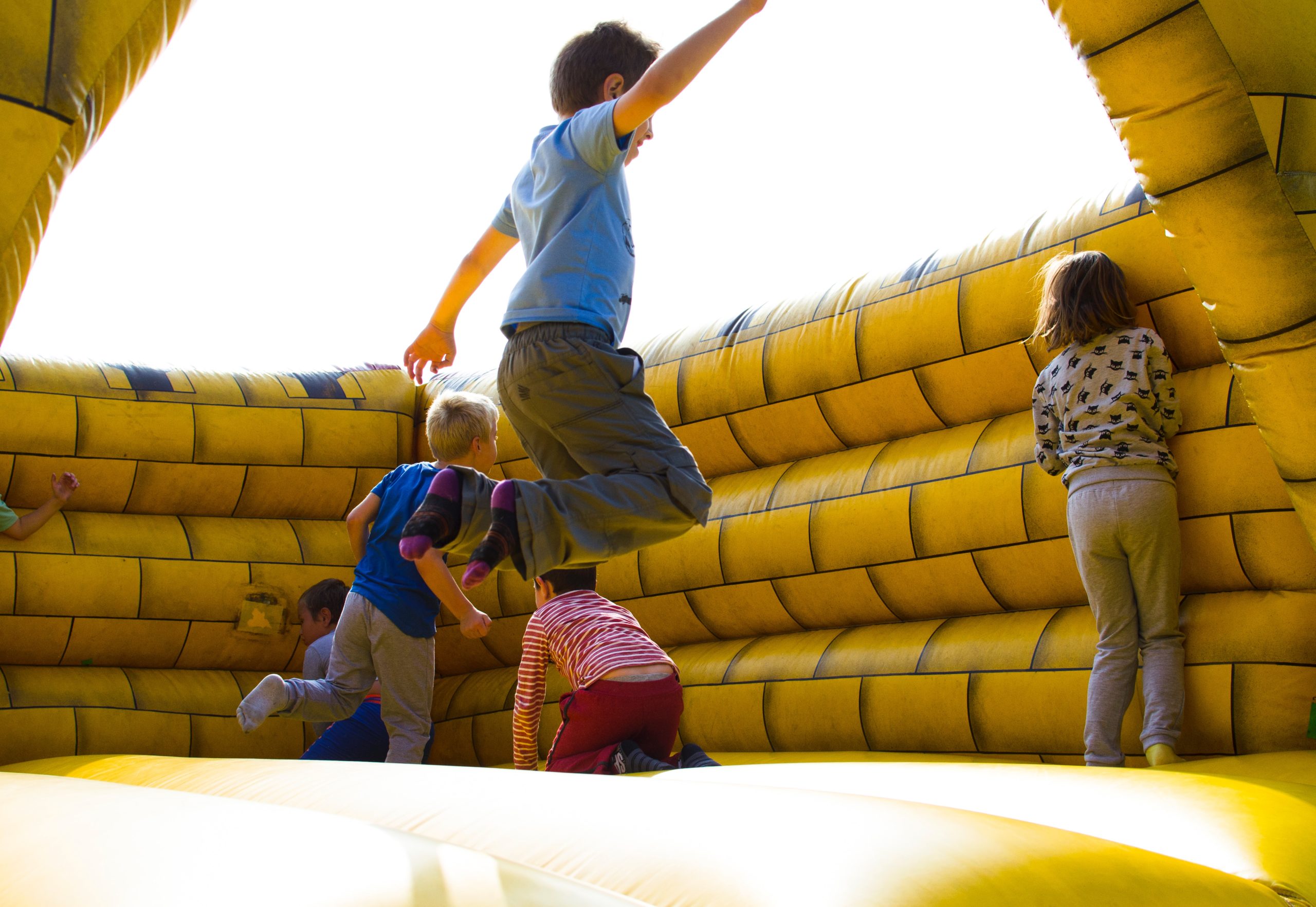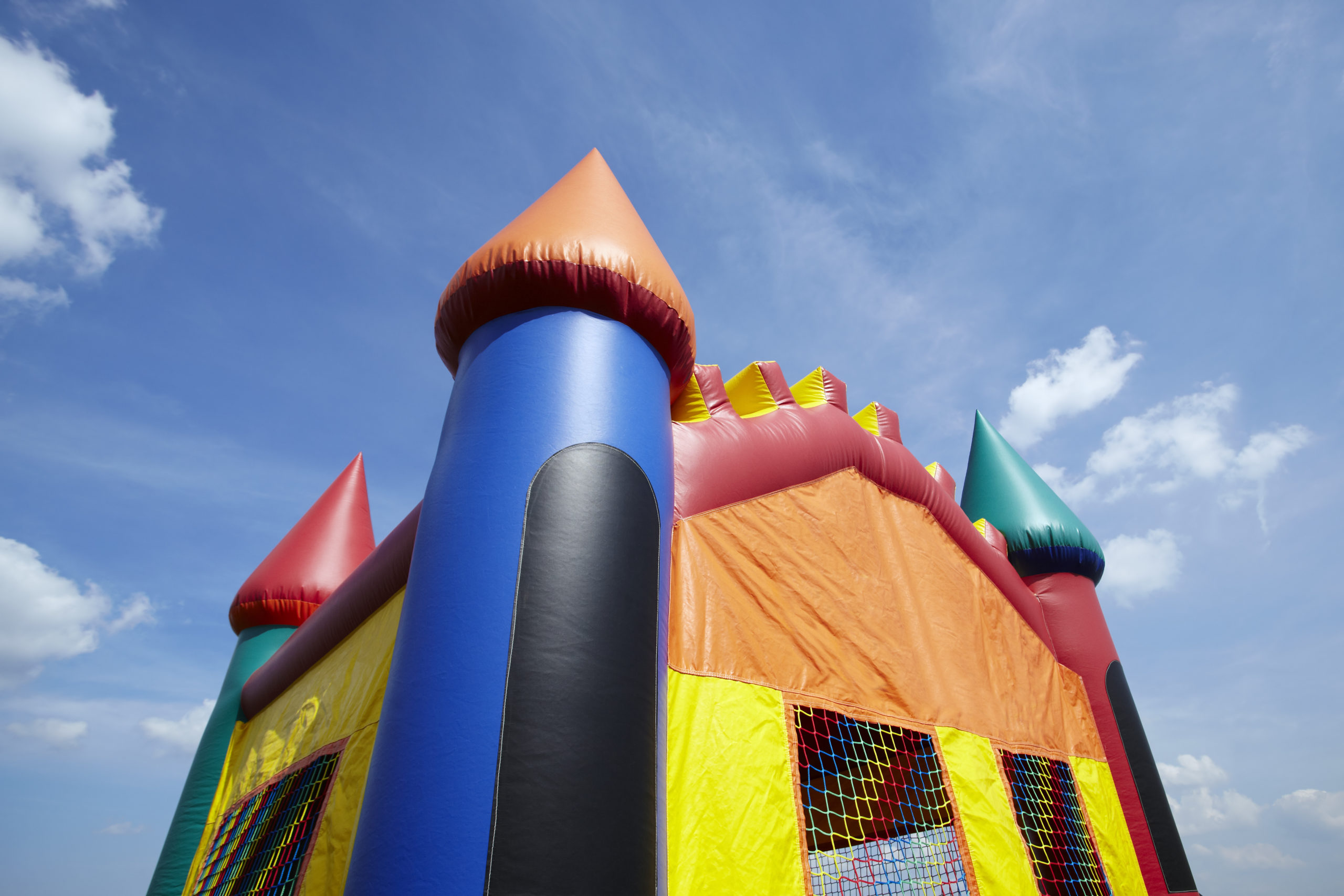How To Choose What Carnival Games to Rent
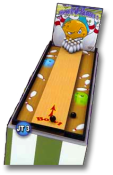 When renting carnival games for your event, there are many things to take into account to make sure your carnival is the best it can be. We will discuss in this article what are all the factors to consider when selecting what games to rent or purchase. The carnival games we will discuss are intended for School Carnivals, Fun Fairs, Festivals, Company Picnics, Trade Shows, and Birthday Parties. Each of these events has different types of people playing.
When renting carnival games for your event, there are many things to take into account to make sure your carnival is the best it can be. We will discuss in this article what are all the factors to consider when selecting what games to rent or purchase. The carnival games we will discuss are intended for School Carnivals, Fun Fairs, Festivals, Company Picnics, Trade Shows, and Birthday Parties. Each of these events has different types of people playing.
An important question to answer when planning your event is – What is the target audience for the carnival games? This is important when selecting carnival games that require skill. If you choose skill games that are too difficult for a 10-year-old, they will not enjoy your event. The same is true if you choose games which are too easy for adults.
Carnival Game Categories
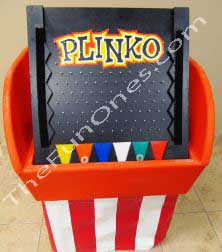 Carnival Games typically fall into 4 categories – Skill, Chance, Winner Every Time, and Strength. Having the correct balance of these will have an impact on how your carnival will be perceived by the attendees.
Carnival Games typically fall into 4 categories – Skill, Chance, Winner Every Time, and Strength. Having the correct balance of these will have an impact on how your carnival will be perceived by the attendees.
- Skill Games – These games require an individual to possess eye hand coordination and sometimes strategy. Within the skill games, make sure you do not have too many toss games as they are the most popular type. Sample games would be Skee Ball, golf putting, and Angry Birds.
- Games of Chance – These games will hold their odds no matter the age or skill of the player. Sample games would be Prize Wheel, Plinko, Cake Walk, and Duck Pond.
- Winner Every Time – These carnival games allow everyone to win, but allow some players to win bigger. Sample games would be Lucky Sucker and Lollipop Tree.
- Strength Games – These carnival games take some type of physical force to win. The most popular of these would be a traditional High Striker game.
Finding the Right Balance
Carnival Game Odds – Some games are easy to win and others can be quite difficult. Finding the right balance for your event can depend on how much money you intend to make at the event and the quality of prizes you want to give away.
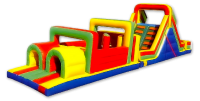 Event Budget - Every event has a budget. So you want to choose the type of games that have great graphics or bring the “WOW” factor, but keep you within budget. This is when choosing a company that has a large variety of games and prices is invaluable. By knowing your budget and know how many people.
Event Budget - Every event has a budget. So you want to choose the type of games that have great graphics or bring the “WOW” factor, but keep you within budget. This is when choosing a company that has a large variety of games and prices is invaluable. By knowing your budget and know how many people.
Games Size – The size of your venue can have an impact on what carnival games you can choose from. There are large inflatable games that bring a “WOW” factor to your event, but take up a lot of floor space. Ceiling height will also come into play with some games.
Inflatables – These can be great ticket eaters if you choose wisely. You want to make sure you can make your money back on any inflatable you select.
Choosing the Vendor
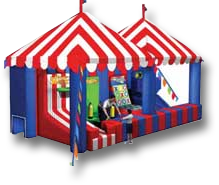 When choosing a company to work with, you want to make sure they know the secrets of running a carnival event. The easiest question to ask to determine if they know what they are doing is “What is the amount of money we can generate from our event?” If they can not tell you, then you should be cautious about how much advise they give you.
When choosing a company to work with, you want to make sure they know the secrets of running a carnival event. The easiest question to ask to determine if they know what they are doing is “What is the amount of money we can generate from our event?” If they can not tell you, then you should be cautious about how much advise they give you.
If you need consultation and training on how to run your carnival, give us a call and we will have you and your team come in for a free consultation. You can click here for pricing on carnival packages.
Are Inflatable Bounce Houses Safe? Part 2
The final inspection step is to make sure the inflatable safety signs are secure and legible and the unit is clean. Every inflatable unit manufactured in the USA is required to have a safety sign on it with instructions and a manufactured date. If you get delivered to your event an inflatable without a safety sign, beware of the safety of the unit. Over the years, we have acquired many small inflatable companies. Some of these companies had units without safety signs and manufacturer information. Almost all were purchased from China manufacturers and were not made for commercial use. We found the stitching and anchor points do not withstand commercial use. When small companies are starting out, some of them buy cheap inflatables from China because that is all they can afford. Make sure to ask if what you are ordering is made by a manufacturer in the USA.
Whether a unit is clean or not is usually an area that an average person can see. Many companies will tell you they "clean and disinfect after every rental". Have you ever wondered how they do this when they pick it up the night before at 10pm in the dark and they are delivering the same unit to you at 8am? It means they open the unit at your event and hope it's clean. If it is not, it means they inflate it at your event site and clean it there. It is the only way it can be done. Whether the person setting it up has the cleaning supplies and the extra time to clean it is the real issue. Make sure your unit is clean before they leave.
Installation and Inflatable Safety
Anchoring is the most important aspect of the installation for inflatable safety. Stake size and installation of the stake determines the holding strength of your unit. You may ask “Why is anchoring so important?” I am glad you asked. The most dangerous element to using an inflatable outdoors is the wind. So, the manufacturers put anchor points all around the inflatable and determine what size stakes must be used to ensure the inflatable stays secure up to 15 mph. Since the length and width of the stake determines the holding power, it is vital that the stakes supplied by the manufacturers are used or replacement stakes that are longer and thicker. If an inflatable company loses stakes throughout the season, which is common when you are picking up equipment in the dark. It is not uncommon for them to run to the hardware store or a landscape nursery and buy 9” nails. These nails are only half the length and width as a stake. The holding power is only a portion of a stake. When you have kids in an inflatable, you must have the proper stakes.
Here are two video links to show what improper staking allows to an inflatable. We do not show you this to prevent you from renting an inflatable, but to drive the point home of what staking is trying to prevent.
Weather and Inflatable Safety
When most people are considering renting an inflatable bounce house for their event, they check the weather to make sure it is not going to rain. If there is a chance of rain, they may call to inquire about ordering, but always ask “What if it rains?, Can I cancel?” Though rain is an inconvenience to any outdoor event, the rain itself does not pose much of a threat to safety. The threat it does pose is the vinyl surface may become wet and slippery. However, anyone renting an inflatable must be more concerned about the wind speeds. Most manufacturers in the USA will only guarantee the safety of their units up to 15 mph. On the front of every inflatable made in the USA, there is a safety sign posted. On these signs you will find the wind rating. In 12 years, I have never seen a sign that allows more than 15 mph winds. A problem with wind is that it is rarely constant. There is always some level of wind gusts. If weather forecasts say winds are 12 mph, the reality is it is averaging 12 mph and may have wind gusts up to 20 mph. 20 mph winds are higher than the manufacturers allow. The following video shows what can happen when an inflatable is not shut down when winds exceed 15mph.
You might be asking "how did this happen?" None of these inflatables should have been inflated in these high winds. It is the responsibility of the person supervising the ride to shut it down. We will discuss this further in the next section on the responsibilities of the attendant.
Are Inflatable Bounce Houses Safe? Part 1
This is one of the most commonly asked questions when people are considering renting an inflatable for their first time. The answer is “it depends”. The safety of an inflatable bounce house depends on many factors which we will discuss 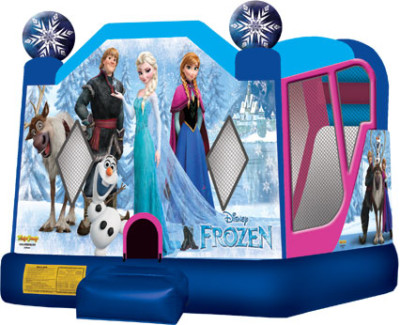 throughout this article. But first you may be asking “is this person qualified to write this article and are they an expert on this topic?” Well, I would say an expert would be someone who works for the insurance industry and investigates how and why accidents occur on inflatables. I am not an expert. However, I have owned an entertainment and party rental company for 12 years which has been responsible for installing and running over 20,000 inflatables over those years and I have personally attended over 300 events with inflatables to witness firsthand how inflatable’s have been installed and supervised. I have also had to investigate accident claims on our own inflatables. Rest assured that to date, we have been blessed not to have been responsible for any injuries on an inflatable and there are reasons for that which we are going to discuss. So, let’s jump into this topic and find out what to look for.
throughout this article. But first you may be asking “is this person qualified to write this article and are they an expert on this topic?” Well, I would say an expert would be someone who works for the insurance industry and investigates how and why accidents occur on inflatables. I am not an expert. However, I have owned an entertainment and party rental company for 12 years which has been responsible for installing and running over 20,000 inflatables over those years and I have personally attended over 300 events with inflatables to witness firsthand how inflatable’s have been installed and supervised. I have also had to investigate accident claims on our own inflatables. Rest assured that to date, we have been blessed not to have been responsible for any injuries on an inflatable and there are reasons for that which we are going to discuss. So, let’s jump into this topic and find out what to look for.
The major areas we will discuss are installation, weather, and the running or supervision of the inflatable. We will start with the installation. A safe installation is the first step to ensure the safety of an inflatable. Let me explain. When an investigation happens for an aircraft accident, they start by trying to put the aircraft back together again. The reason they do this, is they want to be able to determine where the problem started and then decide if it was an equipment malfunction, something missed during a regular inspection or operator error. In a sense, it is similar to a game of dominos. They want to find that first problem which created a chain reaction of events that lead to the accident. It all starts with regular inspections.
Regular Inflatable Bounce House Inspections
What should a regular inspection include? Inspections on inflatable rides include checking the anchor points, seams, safety signs, and cleanliness. We start with the anchor points because they are key to keeping the inflatable secured to the installation point. What we look for here are ripped or torn straps and broken stitching. It is common when installing with stakes, that a hammer or sledge hammer may strike part of the anchor strap tied around the stake while being hammered into the ground. When this happens, it is possible to break strands of the anchor strap and compromise the holding strength. These straps must be removed and replaced. There is no repairing the strap.
The next inspections are the seams. Faulty seams can be difficult to identify and can be responsible for an inflatable unit being too soft, but we have found listening for the sound of air escaping from the seams will identify where too much air is coming out and where the seams are failing. The exit and entry points are typically going to have the most wear, so we start there and then check the stress points and any stairs on the units, and then inspect the rest of the seams. To repair seams correctly, the unit must be cut open from the bottom and repaired internally. These repairs must be done at a professional repair facility like The Fun Ones in Illinois.
The final inspection step is to make sure the safety signs are secure and legible and the unit is clean. Every inflatable unit manufactured in the USA is required to have a safety sign on it with instructions and a manufactured date. If you get delivered to your event an inflatable without a safety sign, beware of the safety of the unit. Over the years, we have acquired many small inflatable companies. Some of these companies had units without safety signs and manufacturer information. Almost all were purchased from China manufacturers and were not made for commercial use. We found the stitching and anchor points do not withstand commercial use. When small companies are starting out, some of them buy cheap inflatables from China because that is all they can afford. Make sure to ask if what you are ordering is made by a manufacturer in the USA.
Whether a unit is clean or not is usually an area that an average person can see. Many companies will tell you they “clean and disinfect after every rental”. Have you ever wondered how they do this when they pick it up the night before at 10pm in the dark and they are delivering the same unit to you at 8am? It means they open the unit at your event and hope it’s clean. If it is not, it means they inflate it at your event site and clean it there. It is the only way it can be done. Whether the person setting it up has the cleaning supplies and the extra time to clean it is the real issue. Make sure your unit is clean before they leave.
Carnival Volunteer Challenges
How to take the fear out of volunteering!
Recruiting the number of volunteers needed to staff your School Carnival or Fun Fair can be a challenge. Here are some of the roadblocks that you may need to navigate in order to have a successful event. It should be a “Fun Fair” not a Work Fair.
Fear of commitment- Volunteers may hesitate to commit to your event for the following reasons: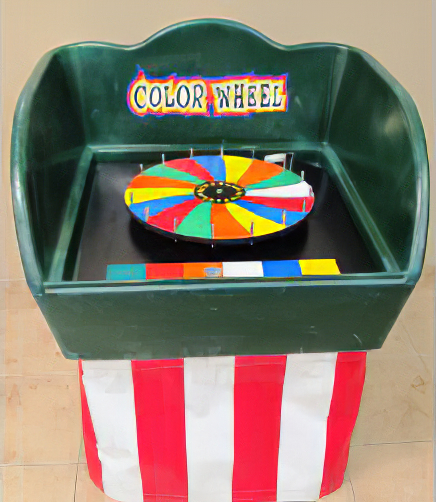
- Work schedule may conflict with the times of the event.
- Volunteers are afraid to be lured into committing to long hours, or too many events during the school year.
- Families may not want to miss out on the fun.
Solutions to help ease the fear of commitment:
- Start out new volunteers with small doses of time commitment.
- Accept any amount of time graciously from new or returning volunteers to avoid “burn out”.
- Schedule short shifts for your volunteers to allow for family time at your event.
- Reward volunteers with incentives. Free or reduced game or food tickets are always appreciated.
- Accept volunteers who can donate time other than at the actual event. Pre-event activities can encourage involvement of the working parents. Planning, marketing, networking, decorating, and purchasing supplies are valuable contributions to the success of the event, and encourage the creativity of volunteers.
- Accept help at clean up or tear down time. This is a bonus for the tired workers who have been at your event and would like a break.
Fear of acceptance- Volunteers may shy away for these reasons:
- New volunteers can be worried about “fitting in” to the group. Some are not natural joiners.
- Volunteers may not feel they have enough to offer.
Solutions to help make your volunteers more welcome:
- Smile! Introduce new volunteers to your group with enthusiasm. Show your gratitude to the returning volunteers as well. Let your volunteers know that they are valuable to your group and the success of the event.
- Create teamwork. Partners and teams can share the work load, and help new workers feel included.
- Communicate with all volunteers. Make sure they are aware of what is expected, and be sensitive to the assignments given.
- Encourage creativity and new ideas. New volunteers can add a fresh new twist on an old event.
- Schedule a “thank you” activity on the event date, or schedule a special event to express your gratitude.
Fear of boredom- Volunteers may lack enthusiasm for these reasons:
- Workers may not feel the event is exciting or worth their valuable time.
- Past volunteers may be bored with “the same old event”.
Solutions to add excitement to your Carnival or Fun Fair:
- Set a goal for the group to achieve. Teamwork can equal success.
- Advertize! Use all the resources you can find to get the word out. Volunteers like to be a part of an exciting activity.
- Use fun themes to create excitement. Theme decorations and coordinating attire can make the time spent working together fun, and help create memories at the event.
- Encourage creativity. Creative volunteers will spark interest with new ideas each year. This will give your volunteers and guests something to look forward to at the next Carnival or Fun Fair!
- Combine some of your group’s smaller “struggling” events together to create a “Big Event”. This will add more excitement and a larger turn out of both volunteers and guests. Food sales, raffles, and contests can create a fun “Bazaar” atmosphere with something for everyone.
- Add a new special activity to create interest.
Sources for recruiting new volunteers to help at your event:
- Parents, grandparents or other family members of your students.
- Senior citizen groups.
- Scout groups.
- Church or other groups that need to fulfill a service to community requirement.
- High School or Junior High Students who enjoy helping entertain a younger crowd.
Good luck with your event!
Sue Schultz
The Fun Ones
Carnival Event Planner

